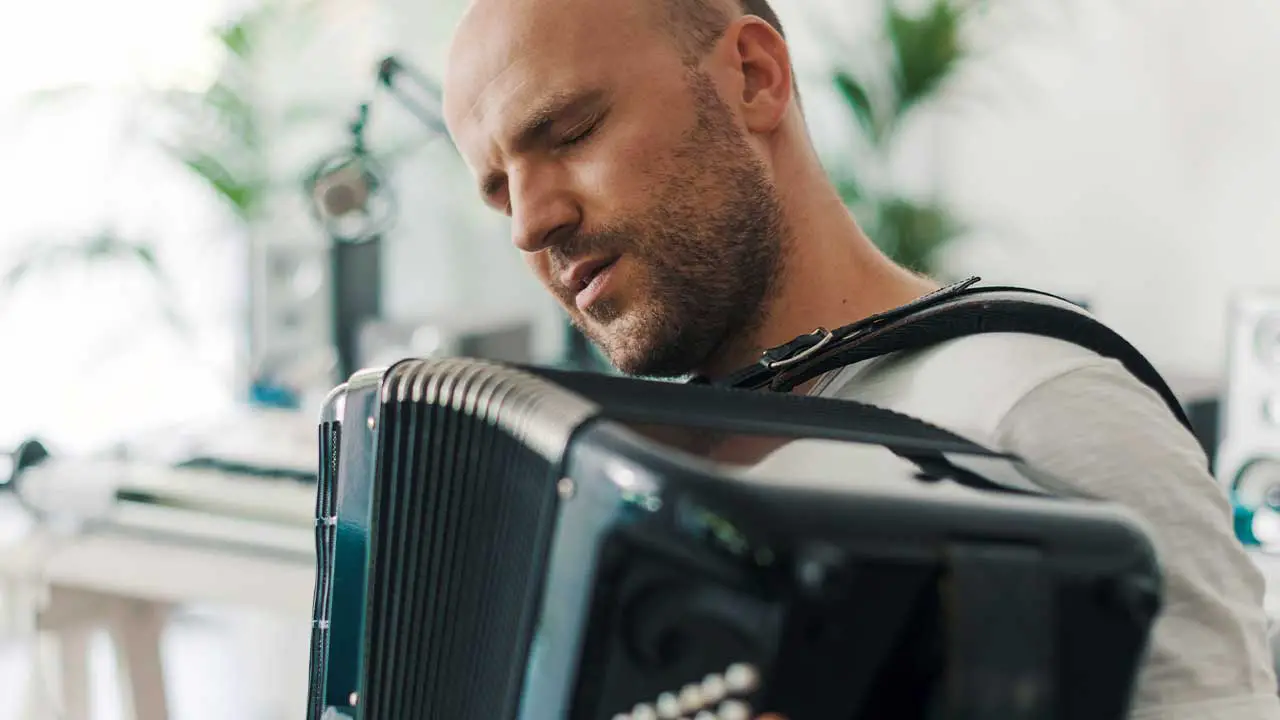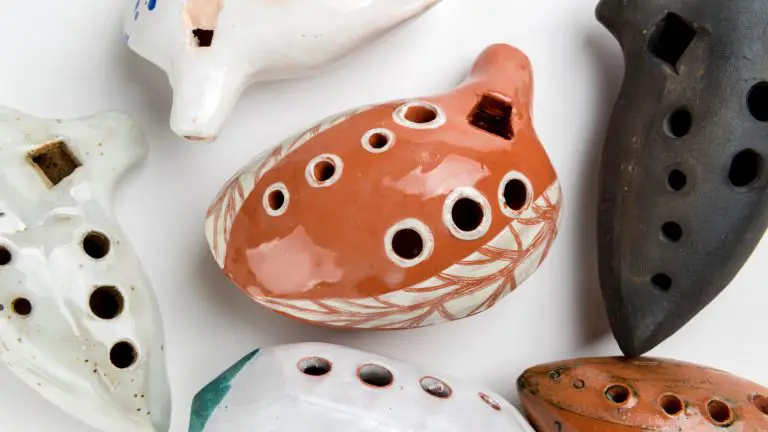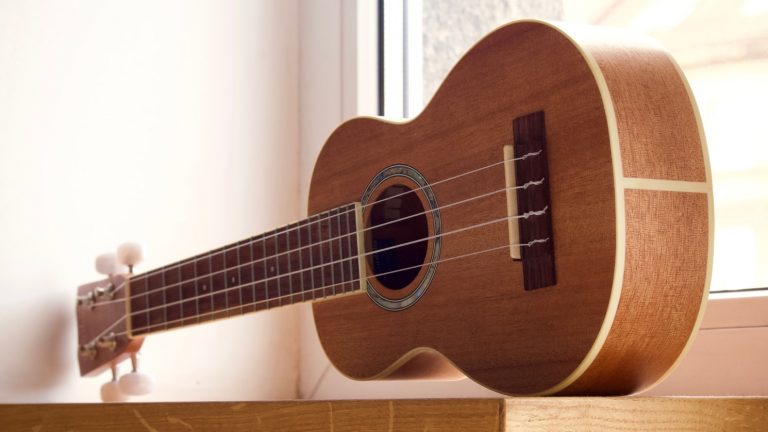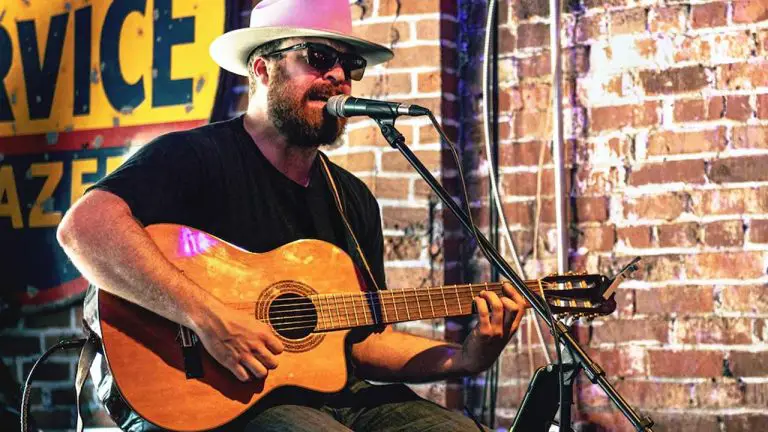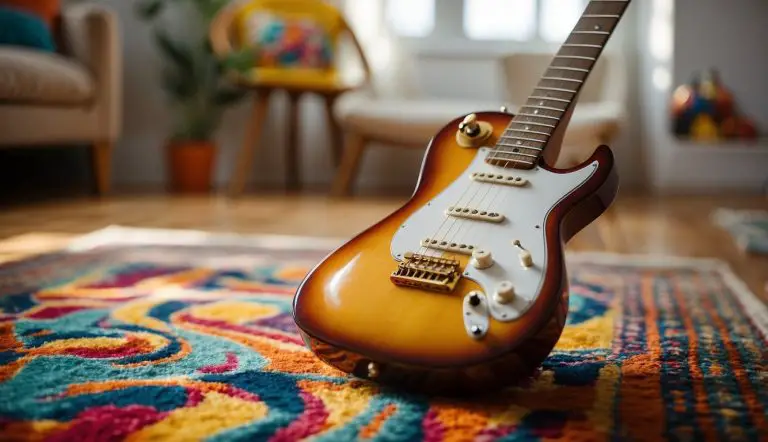Accordion Sheet Music Books for Beginners: Top 3 Picks for New Learners
Folkstrings.com is reader-supported. When you buy through links on our site, we may earn a small commission.
Accordion sheet music books for beginners serve as valuable resources for those embarking on their musical journey with this iconic instrument. The accordion’s versatility spans multiple genres such as folk, classical, tango, and even jazz.
With an accordion in hand and the right learning materials, new musicians can hone their skills and build a solid foundation for future growth.
BTW: If you need recommendations on the best accordion to buy for beginners, check out our article here.
Particularly for beginners, accordion sheet music books should offer a variety of easy-to-read music arrangements, helpful practice tips, and methodologies covering the basics of accordion playing. These books often feature finger placement suggestions and techniques to correctly play various chords and melodies, setting up a strong base for further studying.
When choosing an accordion sheet music book for a beginner, it’s essential to consider factors such as the clarity of sheet music, comprehensiveness of content, and approachable difficulty level to ensure an enjoyable learning experience. Also, a book that focuses on your preferred music genre can help keep motivation levels high and foster a sense of connection with the instrument.
We carefully reviewed a variety of accordion sheet music books for beginners, paying close attention to these critical aspects to help you find the perfect resource for your journey into the amazing world of accordion playing.
Table of Contents
Best Accordion Sheet Music Books for Beginners
We’ve compiled a list of the best accordion sheet music books tailored for beginners, to help you kick off your musical journey with confidence.
Chords, Scales and Arpeggios Book for Accordion Training

We highly recommend this accordion book for beginners seeking a comprehensive approach to learning accordion chords, scales, and arpeggios.
Pros
- Gives a solid foundation for beginners
- Contains 160 essential exercises that will help you greatly
- Gives you practical finger workouts
Cons
- Limited bass button fingering
- Relies on classical piano methods
Having recently tried the Chords, Scales and Arpeggios Book for Accordion Training, we appreciated its extensive range of exercises. As you work through the 160 essential exercises, you will find that you will quickly be building a strong foundation in chord, scale, and arpeggio playing.
Moreover, the practical finger workouts helped us develop better techniques and muscle memory, proving invaluable for our progress. The book’s user-friendliness and simplicity are perfect for beginners, enabling you to tackle each exercise with confidence.
However, there are a few drawbacks, as we found that the book has limited information on bass button fingering and lacks a lot of verbal explanations, a few times we had to Google the meaning of some of the terminologies used.
Another thing we found is that it relies heavily on classical piano methods, these are very useful but may not suit everyone’s learning style. Despite these cons, the Chords, Scales and Arpeggios Book for Accordion Training remains an excellent choice for anyone starting their accordion journey.
Piano Book for Adult Beginners

Firstly, yes, while the focus of this book is on the piano, some of the lessons and techniques can be applicable to the accordion as well.
We recommend this accordion sheet music book for adult beginners who want to learn famous piano songs, music theory, and technique with ease.
Pros
- Well-structured and comprehensive lessons
- Teaches theory alongside practical skills
- Includes streaming video lessons
- Doesn’t require music reading, great for self-learning.
Cons
- Progression may be too fast for some learners so go at your own pace.
When we had a look at the “Piano Book for Adult Beginners,” we were impressed by how well it balanced theory and practical application. The lessons are structured in a way that caters to adult learners, engaging us with famous piano songs and teaching both reading music and playing techniques.
As we worked through the book, we discovered that it covers a wide range of essential topics for beginners. Beginners will appreciate the streaming video lessons that accompany the book, demonstrating the techniques and songs in a visual format. This will make it a lot easier for beginners to grasp the concepts and practice more effectively.
But there were a few limitations we found worth mentioning. The progression in the book might be too fast for some learners, so you very much have to go at your own pace with this book. Just don’t be discouraged if you don’t pick up things as fast as the book says you should. Despite this drawback, we still believe that this accordion sheet music book offers a well-rounded learning experience for adult beginners looking to get started with accordion music.
Accordion Songbook: Selection of Famous Easy Accordion Sheet Music

If you’re a beginner accordion player, this convenient songbook with a variety of easy accordion sheet music should pique your interest.
Pros
- Wide range of popular songs
- 32 concise pages for easy travels
- Independently published
Cons
- Not suitable for advanced players
- Limited personal experience in reviews
Recently, we picked up the “Accordion Songbook: Selection of Famous Easy Accordion Sheet Music” to explore its contents. Catering to beginners, we found it packed with a variety of popular songs that made learning the accordion both fun and enjoyable. The 32-page compact paperback format made it easy for us to carry the book around to practices and meetups.
We appreciate that this songbook is independently published, which means it directly supports the author and their work. But the slight downside is that with the limited number of reviews, it can be hard to gauge the true user experience of others with this book.
While we found the book to be great for beginners like us, more advanced players may not benefit as much from this songbook. On the whole, the “Accordion Songbook: Selection of Famous Easy Accordion Sheet Music” is a compact and varied collection of songs for novices in the accordion world, but more experienced players should look elsewhere.
Accordion Sheet Music Books – Buying Guide
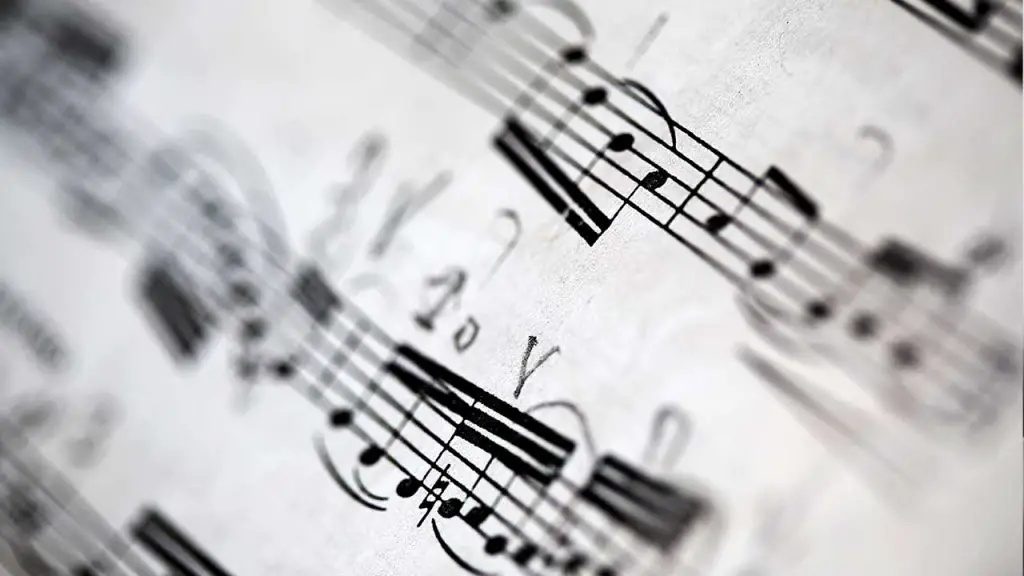
When it comes to selecting the best accordion sheet music book for beginners, there are a few key factors that can help guide you in making an informed decision. In this buying guide, we’ll discuss some of these factors and provide suggestions on how to choose a book that suits your needs.
Level of Difficulty
It’s essential to select a book that matches your current skill level, as well as your learning goals. Look for books specifically designed for beginners, with clearly labelled difficulty levels. This will ensure that you’re not overwhelmed by the material and can progress at a comfortable pace.
Instructional Features
A good beginner accordion sheet music book should provide more than just musical notes. It should have easily understandable instructions and helpful tips for playing the accordion.
Look for books that include explanations for musical symbols, exercises for improving finger coordination, and suggestions for proper hand placements.
Genres and Musical Styles
It’s also essential to pick a book that covers a variety of genres and styles to expose you to different types of accordion music. This will not only keep you motivated and interested, but it will also help you develop a well-rounded playing style.
Reputation and Reviews
Pay attention to the reputation of the author, as well as reviews from fellow musicians who have used the book. This can give you a good idea of the book’s effectiveness and whether it will be a good fit for you.
Top tip: Don’t just read five-star reviews, read the full range and make your own judgement.
Sample Pages
Previewing some pages of the book can be very helpful in determining its quality and suitability. It goes without saying, don’t just look at the front cover. Look inside for clear and easy-to-read sheet music with detailed explanations on how to play the songs.
Accordion Sheet Music for Beginners – FAQs
Is Accordion Sheet Music the Same as Piano?
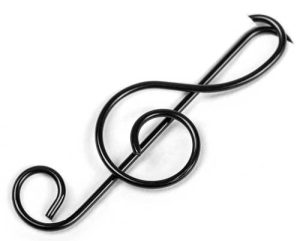
Accordion sheet music and piano sheet music look similar, but they’re not exactly the same.
Both types of music use the same way of writing notes, called staff notation, which has those two parts called the treble and bass clefs.
When you look at piano sheet music, you’ll see the treble and bass clefs together.
The treble clef is for the right hand, and the bass clef is for the left hand. They show you the melody and harmony for the piano.
Accordion sheet music looks a bit different. The treble clef is still for the right hand, just like the piano. But the bass clef is for the left hand, which plays the bass buttons on the accordion.
These buttons are organized in a special way, called the Stradella system, and they make single bass notes and chords.
Playing piano music on an accordion is possible, but you might need to make some changes. The left hand on the accordion is not as flexible as on the piano, so you’ll need to adapt the music. Also, each instrument can make different sounds and volumes, which can affect how the music feels.
To sum it up, accordion and piano sheet music are similar, but not the same. If you want to play piano music on an accordion, you’ll need to make some adjustments to fit the unique features of each instrument.
How Do You Read Accordion Sheet Music?
Reading accordion sheet music is not too difficult, even for beginners. Just like piano music, it uses staff notation with treble and bass clefs.
Here’s a simple guide on how to read accordion sheet music:
* Look at the treble clef: This is for the right hand, which plays the keyboard side of the accordion. The treble clef shows the melody, and you’ll read it the same way you would for piano music.
* Pay attention to the bass clef: This is for the left hand, which plays the bass buttons on the accordion. The bass clef in accordion music can look a bit different than in piano music. Sometimes, it will show single bass notes, but other times it might use symbols or numbers to represent the pre-set chords that you’ll play with the bass buttons.
* Learn the Stradella system: The bass buttons on the accordion follow a specific pattern called the Stradella system. It’s based on the circle of fifths, and it helps you find the right buttons for bass notes and chords. Spend some time getting familiar with this system, and it will make reading the bass clef in accordion sheet music much easier.
* Practice rhythm and timing: Just like with any other sheet music, you’ll need to understand the time signature, note values, and rests to play the music accurately.
* Practice counting beats and keeping time as you play both the right and left-hand parts.
* Pay attention to expression marks: Accordion sheet music may include dynamics (loudness or softness), articulation (how notes are played, like staccato or legato), and other markings that tell you how to play the music with feeling and emotion.
By following these steps and practising regularly, you’ll be well on your way to reading and playing accordion sheet music. Remember, practice makes perfect, so keep working on it, and you’ll get better over time!
Is It Easy to Learn to Play Accordion?
Like any musical instrument, the accordion has its own unique challenges and rewards.
Here’s a simple overview:
Familiarity with keyboards: If you have experience playing the piano or keyboard, you’ll have a head start with the right hand side of the accordion, as it uses a similar keyboard layout. This can make it a lot easier for you to learn.
Learning the bass buttons: The left hand side of the accordion, with its bass buttons, can be more challenging for beginners. The Stradella system, which arranges the buttons, will take some time to learn. But with practice, you’ll start to remember the button locations and play more smoothly.
Coordination: Playing the accordion requires coordinating both hands simultaneously. At first, this can be tricky, but over time, you’ll develop muscle memory and it’ll become more natural.
Bellows control: The bellows, which create the sound by pushing air through the reeds, are an essential part of playing the accordion. Learning to control the bellows effectively takes practice and is key to producing a good tone and accurate dynamics.
Complexity: The difficulty of learning the accordion can depend on the complexity of the music you want to play. If you start with simple tunes, you’ll find it easier to build your skills and confidence.
In summary, learning to play the accordion can be both easy and challenging, depending on your previous musical experience and the effort you put into practice.
But like with any instrument, patience and consistent practice are essential to mastering the accordion. As you progress, you’ll find it increasingly rewarding and enjoyable to play.
Author Profile
-
Daniel Johnstone is an English writer with a love for stringed instruments from around the world.
He shares his love for these instruments through his writing for folkstrings.com, a website dedicated to all things related to folk string music.
Daniel's passion for music started at a young age, and he has since become an accomplished musician, playing guitar, cavaco, and recently, the harp.
His dedication to learning and sharing his knowledge of stringed instruments is evident in his insightful and engaging blog posts. Whether you're a seasoned musician or a beginner, Daniel's writing is sure to inspire and entertain you.
When he's not playing music or writing, you can find Daniel exploring new instruments and seeking out new sounds to share with his readers.
Latest entries
 AutoharpApril 4, 2024What Is the Autoharp Made Of: Exploring Its Materials and Craftsmanship
AutoharpApril 4, 2024What Is the Autoharp Made Of: Exploring Its Materials and Craftsmanship AutoharpApril 4, 2024Is Autoharp Easy to Play? Unveiling the Truth for Beginners
AutoharpApril 4, 2024Is Autoharp Easy to Play? Unveiling the Truth for Beginners AutoharpApril 4, 2024What Is an Autoharp Worth? Your Guide to Pricing and Value
AutoharpApril 4, 2024What Is an Autoharp Worth? Your Guide to Pricing and Value AutoharpApril 4, 2024Are Autoharp and Zither the Same Thing? Unraveling String Instrument Myths
AutoharpApril 4, 2024Are Autoharp and Zither the Same Thing? Unraveling String Instrument Myths
Affiliates:
This post may contain affiliate links that at no additional cost to you, the site may earn a small commission. We only recommend products we would use ourselves and all opinions expressed on this site are our own.
Accuracy Advice:
While we strive to provide up-to-date and accurate information, the content in this article may not reflect the most current research or medical guidelines. We encourage readers to do further research and consult with professionals for more personalized advice.
Our Recommendations:
The products and services mentioned in any of our articles are recommended based on our independent research and personal experience. We are not sponsored by any company. We aim to suggest products and services we believe are of high quality and could be beneficial to our readers.

